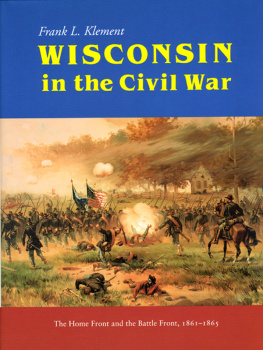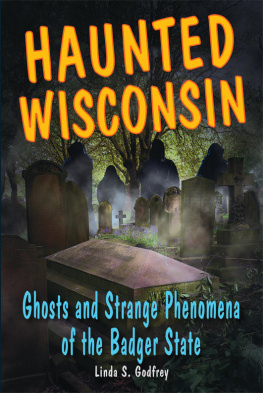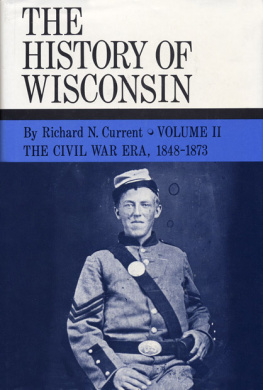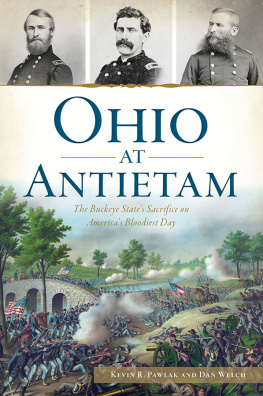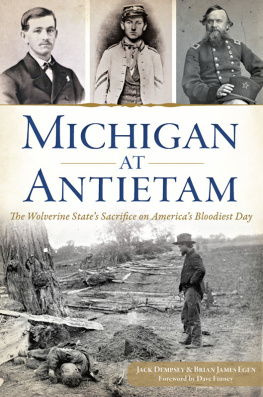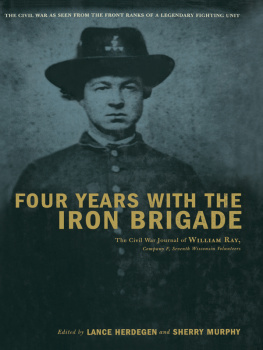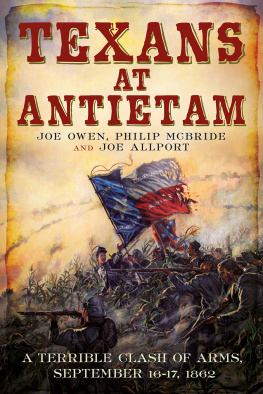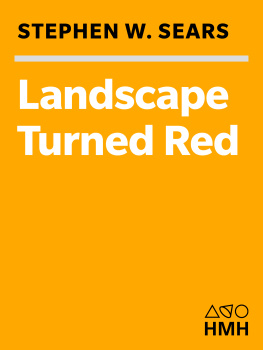Published by The History Press
Charleston, SC
www.historypress.com
Copyright 2020 by Cal James Schoonover
All rights reserved
Cover images courtesy of the Library of Congress.
First published 2020
E-Book edition 2020
ISBN 978.1.43966.993.8
Library of Congress Control Number: 2020930462
Print edition ISBN 978.1.46714.215.1
Notice: The information in this book is true and complete to the best of our knowledge. It is offered without guarantee on the part of the author or The History Press. The author and The History Press disclaim all liability in connection with the use of this book.
All rights reserved. No part of this book may be reproduced or transmitted in any form whatsoever without prior written permission from the publisher except in the case of brief quotations embodied in critical articles and reviews.
To the fighting men of the Iron Brigade and the sacrifices they made to keep all men free. Also, to my dad, Jim, who passed down his interest of history to me. We miss you dearly.
CONTENTS
ACKNOWLEDGEMENTS
No one takes on a major study of any kind without help; that applies to this volume as well. I began my interest in the Civil War in the 1980s, when my parents took my sisters and me to Washington, D.C. My late father, a Vietnam veteran, wanted to see the newly erected wall dedicated to the fallen soldiers who had given their all in Vietnam. It was during this trip that I remember seeing the large statue of Abraham Lincoln at the Lincoln Memorial. We also visited the graves of Civil War soldiers in Arlington National Cemetery. Those two experiences sparked my desire to know more about Civil War history.
Since that time, my interest in the Civil War has only grown and expanded into other areas of history. This book is my first major project on the Civil War; it was challenging at times but enjoyable. I learned more about the Battles of South Mountain and Antietam than I thought possible. With the focus normally on Gettysburg by many history buffs from around the world, I thought it best to add a volume to the less crowded field of the Maryland Campaign of 1862.
Several people had a direct impact on assisting me with putting together this book. I want to thank the following: author and historian John Michael Priest, who read my manuscript, helped with editing, gave great advice and walked the grounds of Antietam with me; author and historian John Hoptak, who also read my manuscript and offered advice; author and historian D. Scott Hartwig, for answering many questions I had.
Also, thanks go out to the courteous staff members at Antietam National Battlefield and Library who assisted me with finding several letters I needed. Without their help, the search for primary documents would have taken much longer. Special thanks go to the staff at the Wisconsin Veterans Museum, who offered an unlimited amount of assistance and helped me find what I needed.
Finally, to my son, James, who made the journey to Maryland with me while I conducted research to write this book. It was a special moment in my life that I was able to take him to the Hallowed Grounds where so many men fought bravely and gave their lives. I hope the love of history I have may have rubbed off on you, my dear boy.
INTRODUCTION
The cry of war spread like wildfire throughout the South and along the Eastern Seaboard, but the anxiousness and excitement felt by many was not limited to these places. States such as Illinois, Minnesota and Michigan also heard the call of war and prepared to do their part in defending the Union. When the Confederates opened fire on Fort Sumter, the South did more than start a war; it awoke a sleeping giant. On April 12, 1861, Minnesotas governor, Alexander Ramsey, guaranteed to provide President Abraham Lincoln with one thousand men willing to fight for the cause. Wisconsin, not to be outdone by neighboring states, quickly stepped up to aid in the war effort. Between the years of 1861 and 1865, more than ninety-one thousand men from Wisconsin volunteered to fight. On April 16, Governor Alexander Randall published a proclamation to the citizens of Wisconsin asking for any able-bodied man to join the fight to save the Union. To the Loyal People of Wisconsin: For the first time in the history of this federal government, organized treason has manifested itself within several states of the Union, and armed rebels are making war against it. The proclamation of the President of the United States tells of unlawful combinations too powerful to be suppressed in the ordinary manner and calls for military to sustain him in executing the laws.
The men of Wisconsin enthusiastically and swiftly responded to the call to arms. The-larger-than-expected groups of anxious volunteers signed enlistment papers for a conflict that was not expected to last more than a few months. Shortly after the governors proclamation was published, the state hired carpenters and ordered them to begin transforming the old fairgrounds near the University of WisconsinMadison into a camp for all the new recruits. They named it Camp Randall, the same name it holds today.
While the recruits were excited to share in what was to become the adventure of a lifetime, members of Wisconsins government saw a problem with so many volunteers joining. With all the eligible men leaving to fight in the war, their families would be left without husbands, fathers and brothers. The war of survival at home could become too great of a burden. So, on the night of April 18, 1861, at half-past 7:00 p.m., a large gathering of people convened at the Assembly Hall in Madison. When the meeting was called to order, Madison mayor Chauncey Abbott proposed a call of action for the support of the wives and children of the volunteers. The room filled with loud applause and cheers for Abbott and Governor Randall. Both men made immediate donations of $50 and $200, respectively. Other politicians and businessmen, for the most part, eagerly donated to the cause. The total raised came to $7,490, an equivalent of $214,610 in todays money.
By the time the meeting came to an end around 11:00 p.m., over 1,500 people had shown up to voice their opinions in support of the brave volunteers. The new recruits went to the armory at city hall, where they received uniforms and other equipment. For many, this was a once-in-a-lifetime adventure they did not want to miss. They thought the upcoming fight would last a few months; no one imagined the horrors that lay ahead. The enthusiasm displayed was remarkable; many knew these could be life-changing events but also that, sadly, some would never return home.
Such was the fate of many who enlisted, with the majority thinking the war would not last more than a few months. The ages of the soldiers are mentioned in almost every book written on the Civil War; however, the names of the men who fought and paid with their lives are often overlooked.
With any major study taken on by the author, he or she becomes close to the project. In the case of this book, the situation is no different. I have lived with the men of the 2nd, 3rd, 6th and 7th Wisconsin from Madison, Wisconsin, to Sharpsburg, Maryland. I have read many letters from the soldiers who fought in several battles other than South Mountain and Antietam. Many of the letters did not offer much in the way of information about the battles, making it difficult to know exactly what each of these soldiers experienced; it is even harder to find firsthand accounts from Confederate soldiers.


